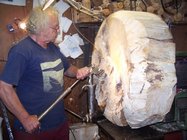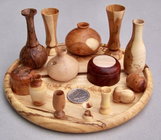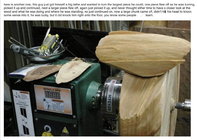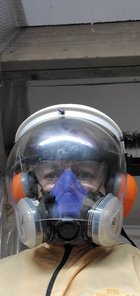Russ Braun
TOTW Team
I think it’s pretty simple, two rules to practice:This came up at a recent club meeting. One guy was insisting that wearing a face shield on very large turnings was not only ineffective but actually detrimental. Pretty much that if a chunk of wood came flying off and hit the face shield, the face shield would crack and the sharp edges cause more damage than the wood would have. He said that standing out of the line of fire was the best (and only) defense. He also said that a famous pro turner made this same point at the Symposium in Raleigh.
Now I am aware that most face shields do not fully protect you from a large chunk of wood. Lynne Yamaguchi's article in Am. Woodturner thoroughly discusses this. But I still was under the belief that even if it breaks, the face shield would be absorbing at least some of the impact energy. Plus I believe a face shield would be effective against glancing blows from larger chunks, and direct hits from smaller chunks.
I also know that the AAW requires all demonstrators to wear face shields.
What I really want to know is the best reasoning to use when arguing for or against the use of a face shield. 1. What is known based on physics and/or experiments and/or direct experience rather than just opinion. 2. Is the pro turner's opinion just an opinion or is it based on some experience. 3. Are there any statistics relevant to this?
1) Participation in most things require one to follow rules/ format. If you don’t want to follow the rules/ format, dont play. Arguing against the rules regarding whether they are right or with merit interests no one; save your breath and your opinion!
2) Personal responsibility is yours and yours alone. If you elect not to protect yourself, cry/ moan to yourself as you walk the road to recovery. If personal freedom supersedes your own common sense, reread rule one!





